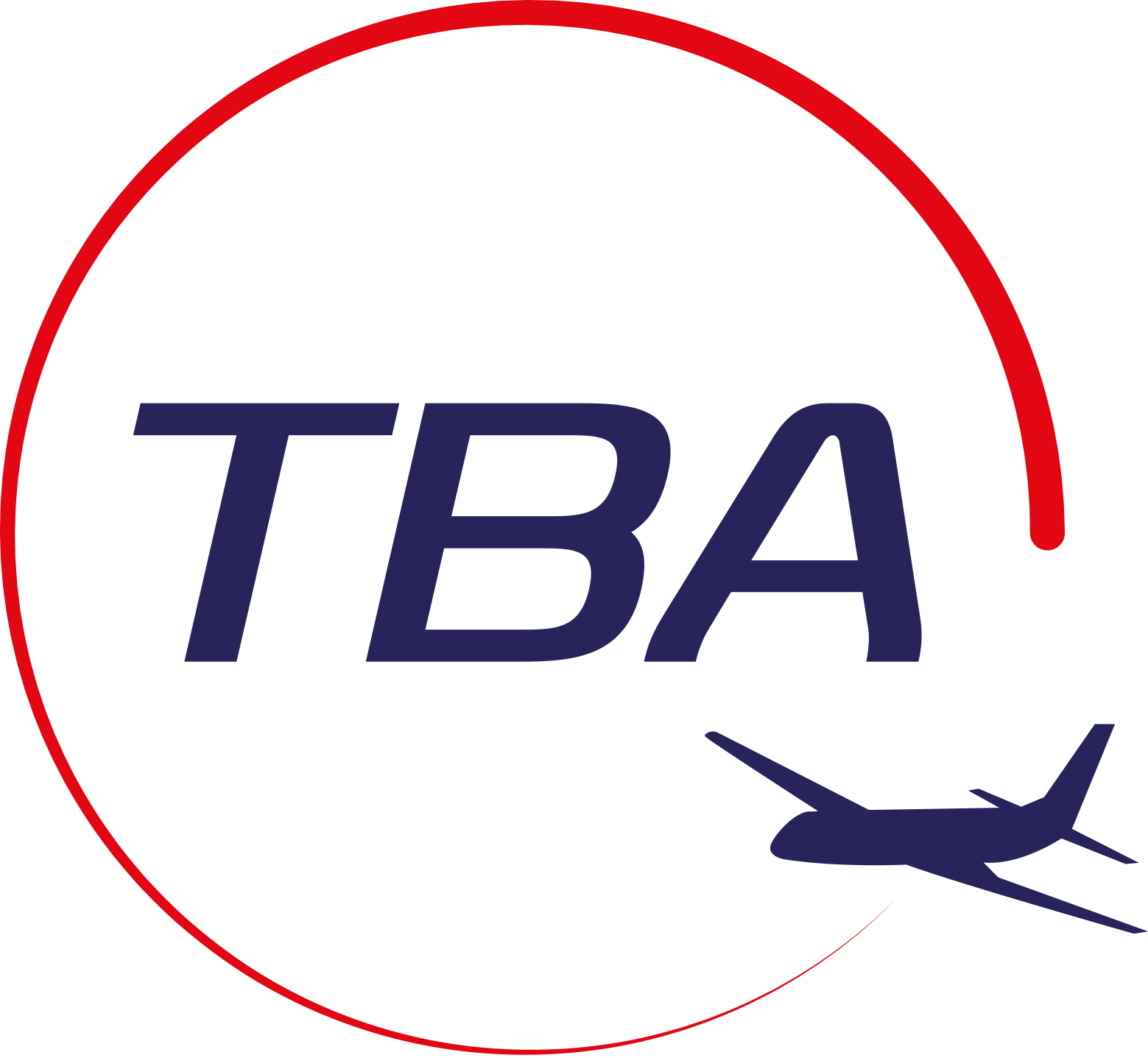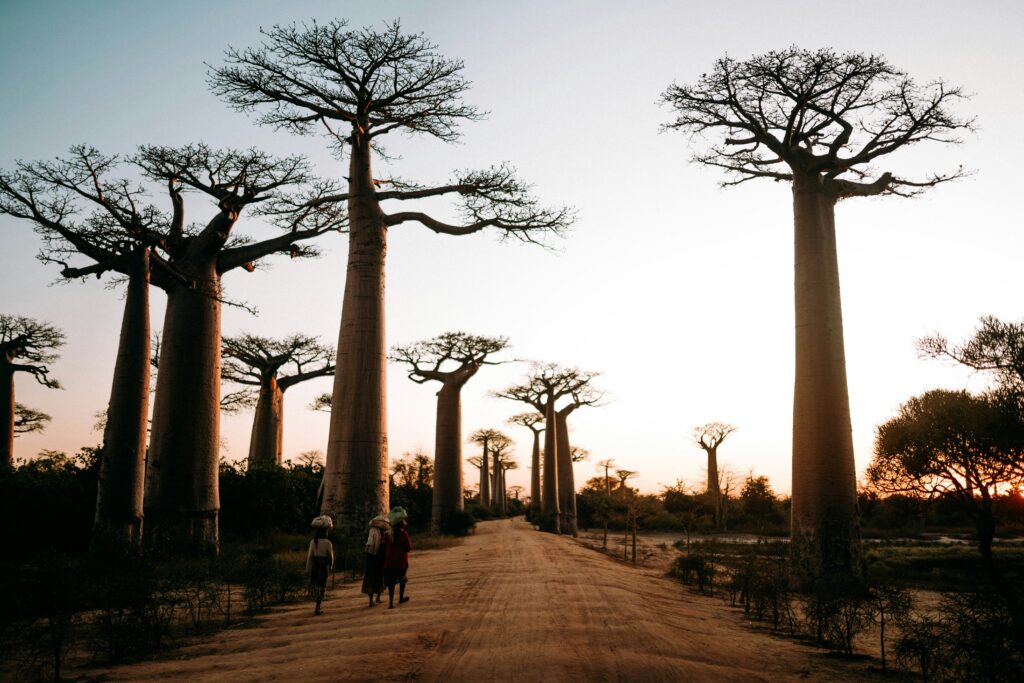
Research and knowledge are the first steps for Madagascar Travel Business Assistance. Here is a fact file for Madagascar to get you started. Contact us if you are looking to start a business in or expand your market to Madagascar. We have consultants ready to help you on the ground in Madagascar.
Streamline your global business ventures – Book your complimentary consultation call with Travel Business Assistance today.
Basic Facts
Origin of the name: The Portuguese named the island St. Lawrence Island because of their arrival on St. Lawrence Day in the year 1500. The island was already known under its Arab name, “island of the Moon”; the Arabs wrote the name either Kamar or Komr, which latter name survives in the modern title of the small outlying group, the Comoro Islands, which the Arabs called Komäir or the lesser Komr.
The current island’s name, Madagascar, is of uncertain origin but historical documents suggest that the Venetian merchant Marco Polo, who did not even visit Madagascar, confused the island with the kingdom of Mogadishu in Somali, East Africa (located slightly north of the Equator), and named it based on mispronunciation and misspelling of the name Mogadishu.
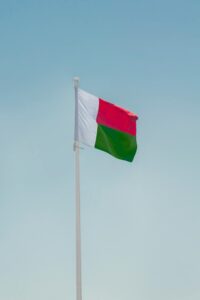
History: Archaeological investigations in the 20th century indicated that human settlers reached Madagascar about 700 CE, it also indicates Western Malayo-Polynesian (Asia) origins as well as Bantu (African) origins. Much of Madagascar was populated by internal migration before the beginning of the 16th century, giving the theretofore empty lands their tompontany (original inhabitants, or “masters of the soil”). European contact did not begin until early in the 16th century when Portuguese sea captain Diogo Dias first spotted the island. The Portuguese, however, failed to establish a base there and it was instead buccaneers from North America and Europe who were more successful in making Madagascar an important trading port on the Indian Ocean during the 17th century. In 1890 Britain gave Madagascar to the French in exchange for Zanzibar and the French turned the island into an official colony in 1897. By the 1920s, nationalist movements began to develop. In 1958 the people of Madagascar voted in a referendum to become an autonomous republic within the French community of overseas nations. Phillibert Tsiranana became the country’s first president while the French maintained control of the majority of trade and industry.
Government: The Politics of Madagascar takes place in a framework of a semi-presidential representative democratic republic, with a pluralist multi-party system. The President of Madagascar is head of state and the Prime Minister of Madagascar is head of government. Executive power is exercised by the government. Legislative power is vested in both the government and the bicameral parliament, which is composed of the Senate and the National Assembly. The Judiciary is independent of the executive and the legislature. The president is elected by majority vote through the two-round system for a 5-year term, renewable twice. The prime minister is appointed by the president.
Official Language: The official languages of Madagascar are Malagasy and French. Madagascar is a Francophone country, and in 2022, French is spoken by around a quarter of the population in Madagascar, i.e. 7.7 million (26.5%). The Malagasy language, of Austronesian origin, is generally spoken throughout the island.
Indigenous Languages: Malagasy is the only indigenous language spoken in Madagascar. Because Madagascar is located near the African continent, it would be logical to assume that its language belongs to African language families. However, investigation reveals that it is more closely related to the Malayo-Polynesian languages.
Population: Estimations of the Madagascar population are 28,812,195 inhabitants (2023 estimates). Madagascar is the 53rd most populated nation in the world, and the 15th most populous in Africa.
Time Zone: Madagascar currently observes Eastern Africa Time (EAT). Eastern Africa Time is consistent with UTC +3. The Eastern Africa Time does not have an associated daylight-saving time. The Eastern Africa Time applies to 10 countries: Comoros, Djibouti, Eritrea, Ethiopia, Kenya, Madagascar, Mayotte, Somalia, Tanzania, and Uganda.
Climate: In Madagascar, two seasons are recognized: a hot, rainy season from November to April and a cooler, dry season from May to October. The east coast has a sub-equatorial climate driven by easterly trade winds, along with the heaviest and most consistent rainfall, with a maximum of 3,700 mm annually. The west coast of the country is generally drier and is subject to significant coastal erosion. The southwest and the extreme south are semi-desert environments, receiving less than 800 mm of rainfall annually. The average annual temperatures vary between 23°C and 27°C along the coast and between 16°C and 19°C in the central mountains.
Borders: Madagascar is an island country lying off the southeastern coast of Africa. Madagascar is surrounded by the Indian Ocean on all sides except for its western border, which lies along the Mozambique Channel. In addition to Mozambique, its closest neighbors are the Comoros Islands and the islands of Réunion and Mauritius. Madagascar has a 4,828km long coastline.
Size: The Total Madagascar area is about 587,041 sq km of which land: is 581,540 sq km and water: is 5,501 sq km. Madagascar is slightly less than twice the size of Arizona, or slightly more than the size of the Iberian Peninsula (Spain + Portugal).
Religion: According to Pew Research Center data for 2021, 85.3 percent of the population are Christian, 3 percent are Muslim, 4.5 percent adhere to traditional beliefs, and 6.9 percent have no affiliation. It is common to alternate between religious identities or to mix traditions, and many individuals hold a combination of Indigenous and Christian or Muslim beliefs. Traditional beliefs include a belief in a Supreme God. Malagasies esteem ancestral links as sacred. Natives believe in close ties between the living and dead. The dead are viewed as intermediaries between God and mankind and can affect the fortunes of the family—for good or evil.
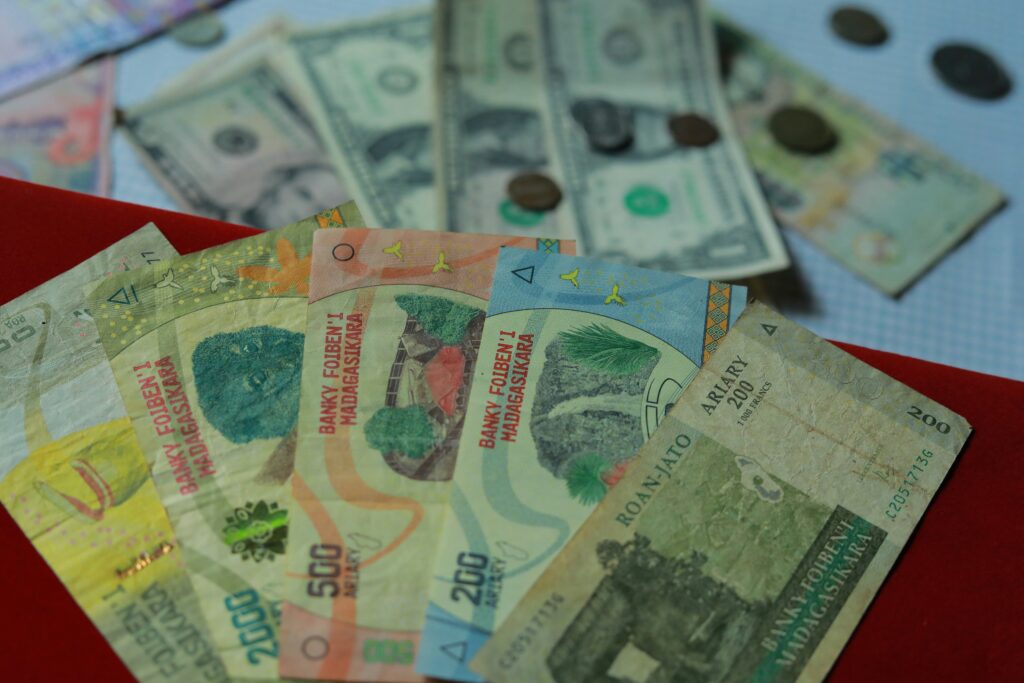 Currency: The ariary (symbol: Ar, ISO 4217 code MGA) is the currency of Madagascar. The names ariary come from pre-colonial currency, with ariary (from the Spanish word for “genuine”) being the name of a silver coin.
Currency: The ariary (symbol: Ar, ISO 4217 code MGA) is the currency of Madagascar. The names ariary come from pre-colonial currency, with ariary (from the Spanish word for “genuine”) being the name of a silver coin.
The Malagasy ariary has 100, 200, 500, 1000, 2000, 5000, and 10,000 ariary in the banknote denominations. The Malagasy ariary is one of the most unique banknotes and not so many people know it. Also is one of the only two non-decimal currencies still in circulation.
The current exchange rate is 4,532.78 Malagasy Ariary to 1 US Dollar, or 5,539.18 Malagasy Ariary to 1 Great British Pound (11 November 2023).
https://www.oanda.com/currency-converter/en/?from=MGA&to=USD&amount=4532.78
https://www.oanda.com/currency-converter/en/?from=MGA&to=GBP&amount=5539.18
History and Key Events
Precolonial & colonial Era
- 350-550AD – First settlers reach Madagascar, making it one of the last major landmasses on Earth to be settled by humans.
- 7th-9th Centuries – Arab traders reach the island. Madagascar becomes an important trading hub connecting ports of the Indian Ocean.
- 11th Century – Bantu-speaking migrants from southeast Africa arrive, along with south Indian Tamil merchants.
- 16th-17th Centuries – Portuguese and French established trading posts.
- c 1540-1897 – Merina kingdom, or Kingdom of Madagascar comes to dominate most of the island by the 18th Century.
- 1818 onwards – London Missionary Society sends missionaries to the island.
- 1828-61 – Queen Ranavalona I responds to increasing political and cultural encroachment on the part of Britain and France by banning Christianity and pressuring most foreigners to leave.
- 1883 – France invades Madagascar in 1883 in the first Franco-Hova war. Madagascar cedes the northern port town of Antsiranana or Diego Suarez to France.
- 1890 – The UK accepts the imposition of a French protectorate on the island, but the government of Madagascar resists.
- 1895 – French forces march on Antananarivo, shelling the city and leading Queen Ranavalona III to surrender.
- 1896-97 – France declares Madagascar a colony and sends the royal family into exile. The formal declaration of a colony sees a 15-year “pacification” campaign by French troops to overcome resistance.
- 1939-45 – World War Two.
- 1940 – France was occupied by German forces. Madagascar is under Vichy French administration. The occupation of France during the war tarnished the colonial administration’s prestige and encouraged the growing independence movement.
- 1942 – Battle of Madagascar. UK forces capture the Vichy French-controlled Island to deny its ports to the Japanese.
- 1946 – Madagascar becomes a French overseas territory.
- 1947-49 – Malagasy Uprising. Nationalists launch attacks on French military bases. France responds by bringing up to 30,000 troops to violently suppress the rebels.
Independence
- 1960 – Madagascar wins independence, with Philibert Tsiranana as president.
- 1972 – Economic stagnation triggers protests Tsiranana hands over power over to a military council.
- 1975 – Didier Ratsiraka was appointed head of state and president of a new ruling body, the Supreme Revolutionary Council (SRC). He rules for the next 26 years.
- 1992 – Democratic reforms usher in the new constitution.
- 2001 – After a disputed presidential election, Ratsiraka flees to France.
- 2009 – Bloodless coup results in economic sanctions.
- 2013 – Democratic elections fail to bring political stability, with the executive pitted against the legislature.
- 2018 – Andry Rajoelina wins the presidential election.
Madagascar Food
Madagascar has become hugely popular around the world thanks to Disney, but let’s explore the joyous world of Malagasy cuisine! What delicious delights does this beautiful island nation have to offer?
To start with, Madagascar is a tropical country with an enormous variety of exotic fruits and vegetables. Being a tropical island nation, it also has access to plenty of seafood.
Due to its geographic position in the Indian Ocean, along the historic trade routes, the local cuisine was influenced by Indian, Southeast Asian, Arab, African, and Chinese cuisine, not to mention the French one, since Madagascar was a French colony up until the 60s. This contributes to the culinary diversity of the island.
Delight in the flavors of Madagascar with these twenty must-try foods, perfect for your next adventure to this enchanting island nation:
Beans or Tsaramaso On the Red Island, white beans are cooked like cassoulet and are often accompanied by zebu meat (Hen’omby Sy Tsaramaso) or pork (Tsaramaso Sy Henakisoa). The shank remains its ideal companion. This dish is offered in all the restaurants in the country. It is one of the most popular Laoka for locals of the big island.
Tekateka are fresh clams that are offered on almost all the beaches of Madagascar by street vendors carrying small baskets. This dish is eaten with a vinaigrette sauce, which can be spicy or not. Once you have tasted it, you won’t be able to stop. If the vinaigrette is not to your liking, the juice of a squeezed lime will do the trick.
Koba is also called “Mofo Ravina,” because it is wrapped with banana leaves, or ravenala, during its preparation in a water bath. As for the necessary ingredients, you will need rice flour and crushed peanuts mixed with brown sugar.
Bambara Pea or Voanjobory In Madagascar, the dry bambara pea is cooked with either piece of pork meat, shank, or sausages. To accompany it, there’s nothing better than white rice and tomato rougail. The preparation is similar to beans, as the Bambara pea is very similar.
Ravitoto is considered the favorite Laoka of Malagasy. Ravitoto is the local name for crushed cassava leaves. It is prepared with the meat of zebu or fatty pork. To accentuate the flavor, it is possible to add coconut milk or crushed peanuts. This tasty dish is eaten mainly at lunchtime. Ravitoto is also served with tomato Achard.
The Achard: The Red Island is a land suitable for planting various fruits and vegetables, which are the basis of the Achard. To prepare it, we choose fruits or vegetables according to the desired taste and color. They are then finely chopped and macerated in vinegar.
Mokary is a rice cake mainly consumed at breakfast time to accompany a good coffee or tea. To prepare it, you have to soak the rice for a few hours or even days. Once the dough is obtained, it is mixed with coconut milk and is then roasted. Mokary can be served hot or cold, at breakfast or at any other time of the day, alone or with a savory dish.
Romazava was once a special dish for the Malagasy ruler; however, today it is currently eaten by all. This traditional dish is one of the seven royal dishes of the country, known as Tatao. Romazava is a kind of soup made of meat or chicken mixed with vegetables. It is possible to add Aangivy (small eggplants), ginger, tomato, garlic, or onions.
Things to see and do
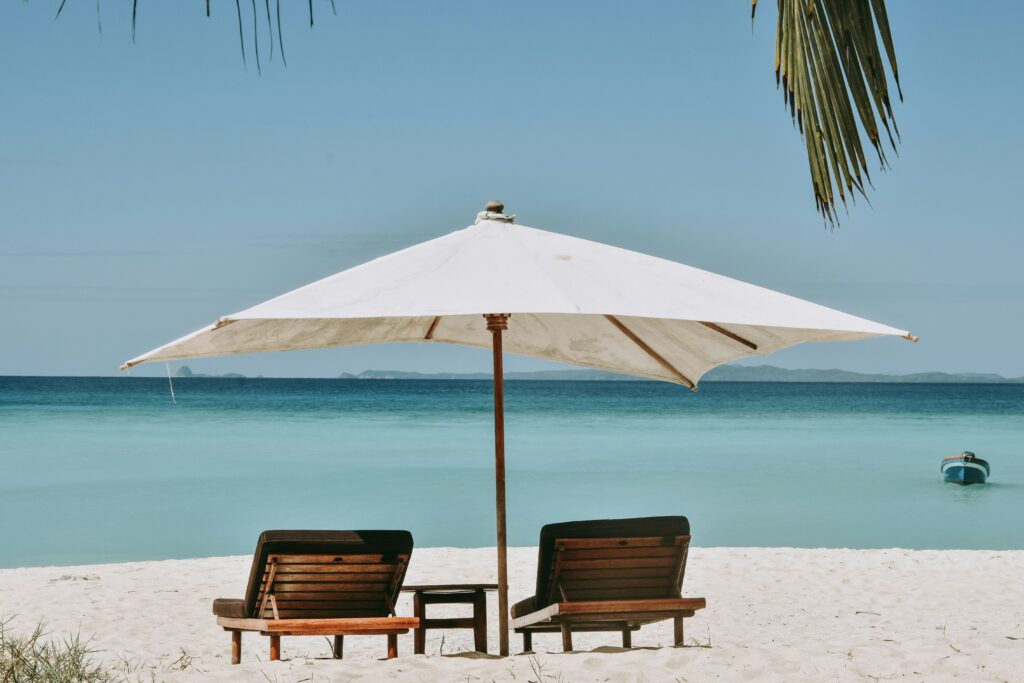
Madagascar’s tourist attractions include its beaches and biodiversity. The island’s endemic wildlife and forests are unique tourist attractions. However, historical sites, craftsman communities, and relaxed cities make it a favorite with return travelers. The island is one of the world’s most biologically diverse areas, and is internationally renowned as a wildlife tourism and ecotourism destination, focusing on lemurs, birds, and orchids. More than half of the island’s breeding birds are endemic. Other native species include the red-bellied lemur, the aye-aye, and the indri (the largest lemur species). Historical sites can be found throughout the country, but mostly in the capital, such as the Royal Palace or Rova in Antananarivo or the sacred hill of Ambohimanga nearby, both UNESCO World Heritage listed sites.
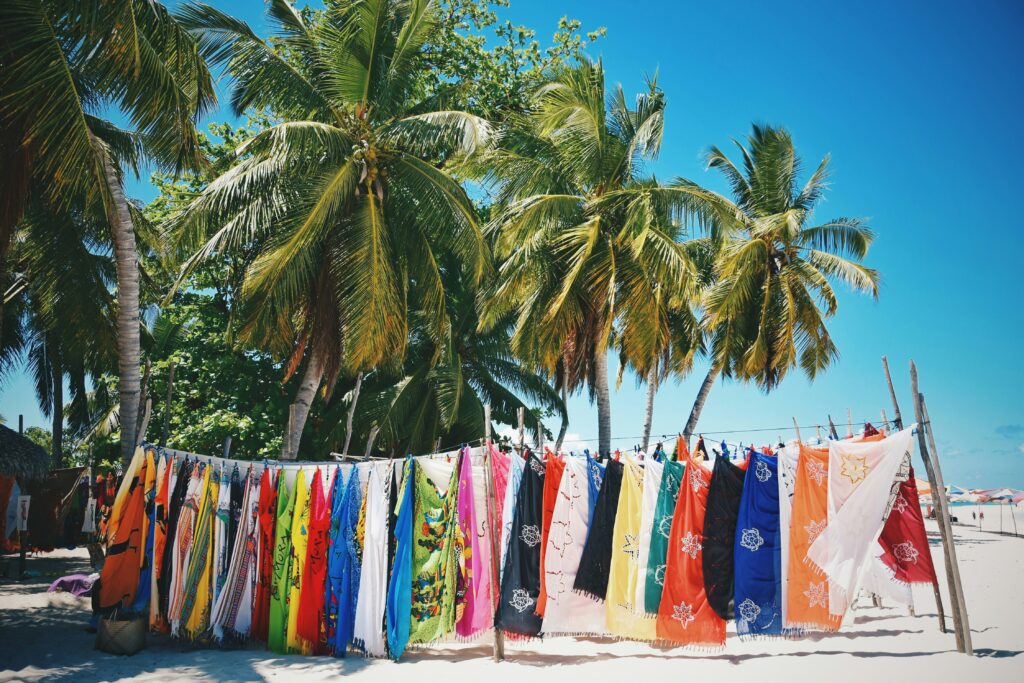
Nosy Tanikely Marine Park “the island of the small earth” or Nosy Tanikely acquired several years ago the status of a Marine and Coastal Protected Area. The park’s management is entrusted to the “Tanihely National Park” association composed of three institutional entities among which Madagascar National Park.
Fishing in Madagascar: a unique experience. Madagascar is one of the world’s leading sport fishing destinations. The big island has one of the most fish waters on the planet, where you can fish for species such as yellowfin tuna, bonito, barracuda, black marlin, sea bream, or swordfish. There are three large areas in the northwest of the island where you can practice big-game fishing.
The essential oil of Ravintsar: Nowadays a must in any book of phytotherapy, this oil will cure young and old! It is extracted from the camphors of Madagascar, recognized as producing an incomparable essential oil. Very accessible, you can find essential oils of Ravintsara in markets and local shops. Antiviral, immunostimulant, and antidepressant, the ravintsara represents a medicine with a thousand virtues.
The Hira Gasy Opera dates from the 14th century. It has evolved in a Creole way. At the beginning of the 19th century, men’s costumes were inspired by the uniforms of the Malagasy royal army equipped by England. Violins, drums, and trumpets are also a heritage of the bands of the Malagasy royal army, also equipped by England. The women’s dresses reproduce those offered by the Queen of England, Victoria, to the queens of Madagasikara.
The Andafiavaratra Museum, located on the highest hilltop of the capital city of Antananarivo, was the residence of Prime Minister Rainilaiarivony of Madagascar, who governed the island kingdom in the late 19th century. The building currently serves as a museum and the estimated 1,466 objects of historical importance to the Kingdom of Madagascar that were rescued from the 1995 fire at the Rova of Antananarivo are housed
Nosy Tanikely Marine Park: Dive into translucent water where all kinds of fish swim among corals. It is a trip to enjoy with family and introduce yourselves to the joys of diving. The reserve has exceptional marine wealth. Nosy Tanikely has a spectacular coral reef which truly is an aquarium full of life. You will see many colored fishes and many species such as sea turtles, rays, dolphins, and even small harmless sharks.
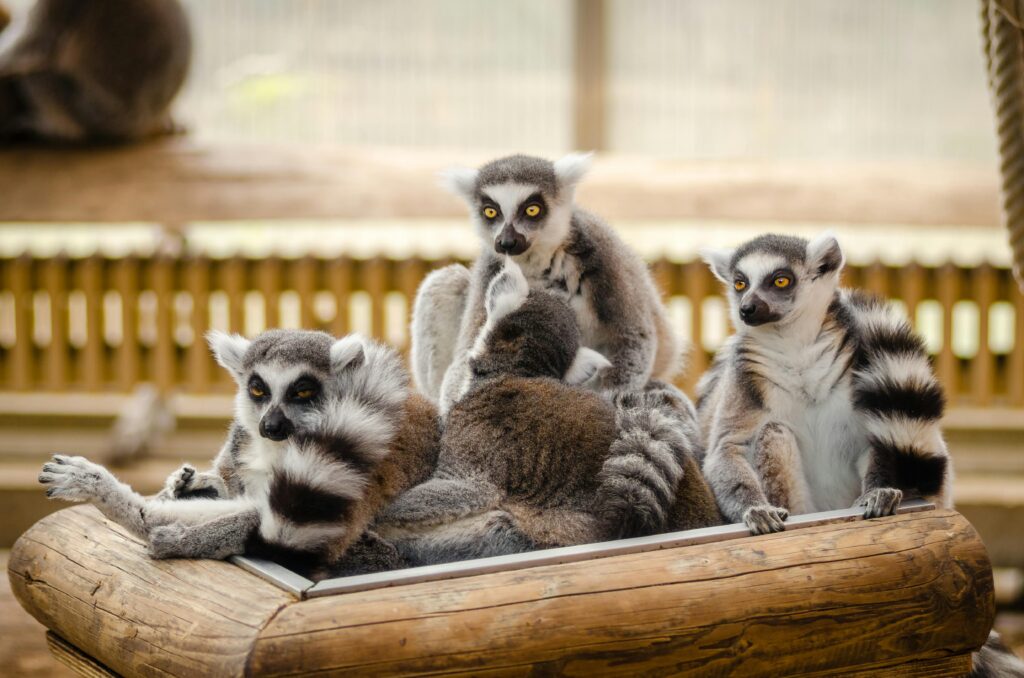
Lemurs are a monkey species endemic to Madagascar. You can only find the five families of this atypical monkey on the “Great Island.” They can be found in National Parks, natural reserves; or in their simplest habitat, the rainforest. Malagasy fauna will give a little magic to your excursions during a forest hike, your outings in the Great South; or your birdwatching tours.
The Tsingy Of Madagascar, A Geological Curiosity: Visible in several of Madagascar’s regions, the Tsingy are wide areas of limestone and friable rocks made of fossilized shells. Million years ago, Madagascar was still attached to Africa’s continent… Don’t forget to bring suitable clothes as there are deep cavities on the Tsingy ground, and the humidity level is very high there and the plants tend to go up to reach the light.
Sambatra festival: For centuries the Antambahoaka have been celebrating the Sambatra, which is held every seven years. This Sambatra is not merely the ritual of the collective circumcision of the boys born in the seven years preceding it but also marks the transition from young boy to adult male and Zafiraminia, son of Raminia. At the same time, the Sambatra is the reminiscence of the exodus that brought them to Madagascar.
Ambositra: Considered the birthplace of Malagasy crafts, the city of Ambositra overflows with a multitude of treasures that display a rich cultural heritage. The Ambositra crafts in the highlands are now on the UNESCO Intangible Cultural Heritage list. During your visit, do not miss the famous Zafimaniry villages, known for their creativity and excellence in the art of woodcarving, the mastery of which requires special attention because it uses such valuable materials as ebony and rosewood.
Economy
The economy of Madagascar is a market economy and is supported by Madagascar’s well-established agricultural industry and emerging tourism, textile, and mining industries. Malagasy agriculture produces tropical staple crops such as rice and cassava, as well as cash crops such as vanilla and coffee. Madagascar’s wealth of natural resources supports its sizable mining industry.
Agriculture, including fishing and forestry, is Madagascar’s largest industry and employs 80% of its labor force. Madagascar’s varied climate, ranging from tropical along the coasts, moderate in the highlands, and arid in the south, allows for the cultivation of tropical crops such as rice, cassava, beans, and bananas. In 2011, agricultural products-especially cloves, vanilla, cacao, sugar, pepper, and coffee accounted for Madagascar’s top twelve exports by value. Madagascar produces the second-largest vanilla harvest in the world and Malagasy vanilla accounts for about a quarter of the global vanilla market. Textile exports from Madagascar’s Export Processing Zones, located around Antananarivo and Antsirabe, account for the majority of garment exports. A small but growing part of the economy is based on the mining of ilmenite, with investments emerging in recent years, particularly near Tulear and Fort Dauphin. Gemstone mining is also an important part of Madagascar’s economy.
Doing Business in Madagascar
Ease of Doing Business Index Scores
Overall score: 47.7 (2020)
Starting a business score: 88.5 (2020)
Trading across Borders score: 61.0 (2020)
Enforcing Contracts score: 50.0 (2020)
Legal System: Madagascar’s law is a mixture of the laws that already existed at the time of the arrival of the French to the territory with the French law, ways, and customs used to judge daily conflicts. The language of justice in Madagascar is French and Malagasy. It is possible and easy to have recourse to an interpreter in Madagascar. The law formally prohibits discrimination based on race, gender, disability, and social status. Although Madagascar’s Constitution states the independence of the judicial system to the executive branch, the latter often interferes with the former (also through the reassignment of judges).
Company creation procedures:
- Apply for a tax identification number (NIF) and verify the necessary forms and registration fees at the One-Stop Shop EDBM (Economic Development Board of Madagascar)
- Register the company, pay the registration fees, and apply for a license (Carte Professionnelle), for registration at INSTAT and the publication of a notice of company incorporation at the EDBM (Economic Development Board of Madagascar)
- Register employees with Social Security at the EDBM (Economic Development Board of Madagascar)
- Register employees for health insurance at the OSTIE (Organisation Sanitaire Tananarivienne Inter Entreprises)
- File a declaration of the start of activities to the Labor Inspectorate
Economic Development Board of Madagascar (EDBM)
The Economic Development Board of Madagascar (EDBM) is your reference partner for your investments in Madagascar. As an investment promotion agency, EDBM has set objectives to strengthen the competitiveness of the Malagasy private sector, to increase Foreign Direct Investment (FDI), to elaborate and recommend business incentives for private investments in Madagascar, to support investors in steps for setting up their business and/or expansion by providing tailored services by specialized Advisors (chargé of sector portfolio) and through its one-stop shop,
Closely related to the Presidency of the Republic, EDBM is the institutional expression of the Government’s commitment to boost economic growth and to create jobs through the establishment and development of projects maximizing profits for Madagascar which are brought both by foreigners and locals. EDBM is your entry point, for anyone who intends to look for business opportunities with high growth potential and in which Madagascar has comparative advantages: Agribusiness, exporting light industry such as Textile Garments, infrastructure/PPP, mining, ICT, and tourism. Services provided at the one-stop shop include:
- Company creation.
- Boarding agreements or 72-hour entry visas to obtain a convertible visa.
- Company modification at the Trade and Commerce Registry.
- Environmental permits.
- Free regime companies and free zones.
- Land requests.
- Long-stay visas.
- Opening authorizations, classification, and licenses.
- Prior notices of creation (tourism sector).
- Residence permits and morality investigations are carried out by the Ministry of Interior before long-stay visa approval.
- Administrative costs simulation during company creation.
- Statistical card modification.
- Work permits.
Investors can communicate with EDBM in French or English, but all required documents must be submitted in French or translated into French.
Why invest in Madagascar
- Ideally located at the gates of Africa and in the heart of the Indian Ocean, gives access to 900 million potential consumers: As a member of the Southern African Development Community (SADC), the Common Market for Eastern and Southern Africa (COMESA), the Indian Ocean Commission (IOC) and the Indian Ocean Rim Association (IORA), Madagascar has access to more than 900 million consumers.
- Access to U.S. and European markets through preferential market access: Madagascar’s eligibility for the African Growth and Opportunities Act (AGOA) with the United States and the signing of the Economic Partnership Agreement (EPA) with the European Union enable the country’s companies to export to these markets without customs duties. Reflecting trade dynamism between the Big Island and these two zones, exports to the United States amounted to USD 513 million in 2019 and USD 796 million to the European Union.
- Versatility of investment opportunities thanks to high-potential areas: Thanks to an ambitious sectoral strategy, oriented towards promoting sectors with strong competitive advantages, Madagascar offers a wide range of opportunities in tourism, agribusiness, mining, textiles, ICT, renewable energies, infrastructure…
- Competitive establishment costs: Benefiting from numerous cost advantages, investing in Madagascar gives access to multiple exclusive competitive factors. Skilled labor at a competitive cost, electricity at 0.07 USD/kWh with a fixed premium of 15.66 USD/kWh, and running water at 0.37 USD/m³ allows for significant savings on investments. Moreover, land rental is only 2.00 USD/m²/month for industrial use, along with low-cost materials and natural inputs. In addition, the facilitation of resource exploitation (e.g. open-pit mining, farming, and infrastructure) and internet speed (number one in Africa*) add to the many incentives to attract FDI.
- Legal and fiscal frameworks that foster investment: Madagascar is currently overhauling its legal framework for investment, notably through the reform of Law No. 2007-036 of January 14, 2008, on investment in Madagascar, which is being adopted by the Government and Parliament. The new legislation will incorporate the principles of freedom of investment, equal treatment of all investors, fair and equitable treatment, protection of property rights, and freedom of transfer.
- The Malagasy Government is committed to structural projects related to infrastructure and renewable energy sources: Beyond its achievements, the Malagasy state relies on public-private partnerships. Ambitious infrastructure projects are already underway in telecommunications by installing more than 12,000 km of optic fiber network over 14.000 km of radio relay networks. In addition, energy projects are focusing on the construction of hydroelectric power plants such as Volobe, financed by a US grant of USD 500 million, to reach 110 MW of power. The next step will be the development of infrastructure necessary for the emergence of growth poles. Economic investment zones, including those dedicated specifically to textiles (an integrated industrial zone of more than 100 ha) will be created.
- Unrivaled natural resources: Madagascar offers a particularly dense and varied array of agricultural, mining, energy, and fishing potential. Its idyllic landscapes and its unique biodiversity (number one in the world in terms of endemicity and number one in Africa in terms of biodiversity) are major assets for tourism investments.
Investment Opportunities:
- Mines:
- Madagascar has a rich subsoil and offers a whole mosaic of precious stones, precious metals, and various minerals and oils.
- Moreover, Madagascar is the first African country to implement the mining cadaster system through the Mining Cadaster Office of Madagascar, created in 2000.
- A stable legal framework, investment protection, and a favorable tax system are made available to investors through the Large Mining Investment Act for large mining operators (USD 25 million investment and over).
- As a member of the Extractive Industry Transparency Initiative (EITI), the country would allow for safe returns on investment.
- ICT: A booming sector, mobile telephony, and the internet are growing exponentially in Madagascar. Mobile internet subscribers increased by 7.73% in 2019, i.e. 2.9 million users. There are four operators in this sector: Telma, Orange, Airtel and Blueline. ARTEC (Communication Technologies Regulatory Authority) ensures the regulation, control, and monitoring of telecommunications. Some key indicators of the ICT vitality and potential:
- Wireless penetration rate: 45.63%
- Internet penetration rate: 11.6%
- The volume of mobile internet traffic: 97,732 To
- Light Industry:
- Madagascar has plenty of commodities that are world-famous for their quality. The various vegetable and animal fibers, such as cotton, sisal, and leather…, are ideal for the yarn and weaving industries.
- Ideally located between Asia and Africa, the country has access to trading platforms in Mauritius and South Africa, facilitating access to inputs and expertise. Thanks to its numerous logistic facilities (port of Toamasina and Ehoala, airports of Antananarivo and Nosy be…), the Big Island is privileged by preferential access to the AGOA, COMESA, and SADC markets.
- The Big Island has a talented workforce at a competitive cost. Malagasy workers are recognized worldwide for their dexterity and productivity.
- Effective partnership networks and incentive schemes for free zone companies through tax and customs exemptions are also major attractions for investing in the sector.
- Renewable Energies: Local electricity demand currently exceeds supply. The three networks available in the country need to be connected thanks to the wide range of renewable energies (hydroelectric, wind, solar…) which are just waiting to be exploited. Thanks to its geographical location, Madagascar has:
- 2 2,800 hours of sunshine per year – 2,000 kWh/m2 per year
- 6 to 8 m/s wind speed in the North – 6 to 6.5 m/s in the center – 8 to 9 m/s in the South and at 50 m high
- In addition, legal and institutional reforms have been initiated for private investment.
- Tourism:
- Given its diversified ecosystems hosting biodiversity unique in the world, Madagascar has an incomparable tourist potential. (90% endemicity rate).
- Exceptional ecolodges and hotels of very high standing rivaling the very best addresses in the world testify to the potential of the Big Island.
- Madagascar lists 3 UNESCO World Heritage sites. Half-African, half-Asian, Madagascar boasts an outstanding cultural heritage, and discovering it opens doors to sustainable and community-based tourism.
- Agribusiness:
- With a total of 30 million ha of agricultural land, only 10% of it is farmed in Madagascar. Large areas are thus available for new plantations. The great diversity of soils and climates also allows for a wide range of crops.
- In contrast with African regions, Malagasy farmland is relatively close to major ports (about 200 km away) which are being modernized.
- National processors and cooperatives have expertise in everything local, thus offering ideal prospects for joint ventures to boost production and exports.
- With competitive establishment costs and opportunities for energy development, the «made in Madagascar» label has become world-renowned and is set to be well-established in the organic market.
Madagascar Flagship Projects
Ambatovy Nickel Project: Now it is one of the world’s largest nickel projects. It has broadly drawn attention for its unique integrated production system that accomplishes the entire process –from mining to refinery –in a single country. Ambatovy is a large tonnage, long-life nickel, and cobalt mining enterprise located in Madagascar. The project is the largest ever foreign investment in the country and one of the biggest in Sub–Saharan Africa and the Indian Ocean region. Capacity is 60,000 tons of refined nickel, 5,600 tons of cobalt, and 210,000 tons of ammonium sulfate fertilizer. Ambatovy is one of the world’s largest lateritic nickel mines.
Health
Yellow fever vaccination certificate is required for travelers aged 9 months or over arriving from countries with a risk of yellow fever transmission and for travelers having transited for more than 12 hours through an airport of a country with a risk of yellow fever transmission.
It is strongly recommended that you visit a travel vaccination clinic and get other vaccinations and prophylaxis for malaria.
COVID-19
Madagascar is now open to travelers. The Malagasy government has lifted all COVID-19 health restrictions for travelers to Madagascar.
Immigration
A valid passport is required for travel to Madagascar. Passports should have a minimum validity of 6 months and 3 blank pages.
- No visa is required for a stay less than 15 days in Madagascar regardless of the nationality. However, a “landing authorization of $10” has to be paid upon entry of the territory.
- It is allowed to get Tourist visa (for a stay less than 60 days) upon arrival at the airport/port regardless of the nationality.
Interesting Madagascar Facts
Alley of the Baobabs: One of the most iconic sights in Madagascar is Allée des Baobabs (Alley of the Baobabs), a 2km natural avenue lined with baobab trees (Adansonia grandidieri). The trees are known as renala – ‘mother of the forest’ – in Malagasy. Its striking landscape draws travelers from around the world, making it one of the most visited locations in the region. It has been a center of local conservation efforts and was granted temporary protected status in July 2007 by the Ministry of Environment, Water and Forestry – a step toward making it Madagascar’s first natural monument.
Vanilla: Madagascar is famous for its vanilla. It supplies around 80% of the world’s natural vanilla, which accounts for 25% of the country’s exports. Bourbon vanilla beans produce a clear and creamy flavor and are regarded as the most popular vanilla profile, making Madagascar the top producer of vanilla globally. While Madagascan beans are the thinnest of all vanilla beans seen today, they are the most impactful in terms of flavor with a vanillin level of 2.0 to 2.5%. Vanillin is the primary component of the extract of the vanilla bean. Madagascar vanilla flavor is described as sweet, creamy, rich, tobacco-like, balsamic, and with a spicy back note.
Madagascar Travel Business Assistance
Are you planning to move your business to Madagascar or open up Madagascar as a new market? Perhaps there is a conference in Madagascar you need to attend and you need some help. We are here for your Madagascar Travel Business Assistance.
